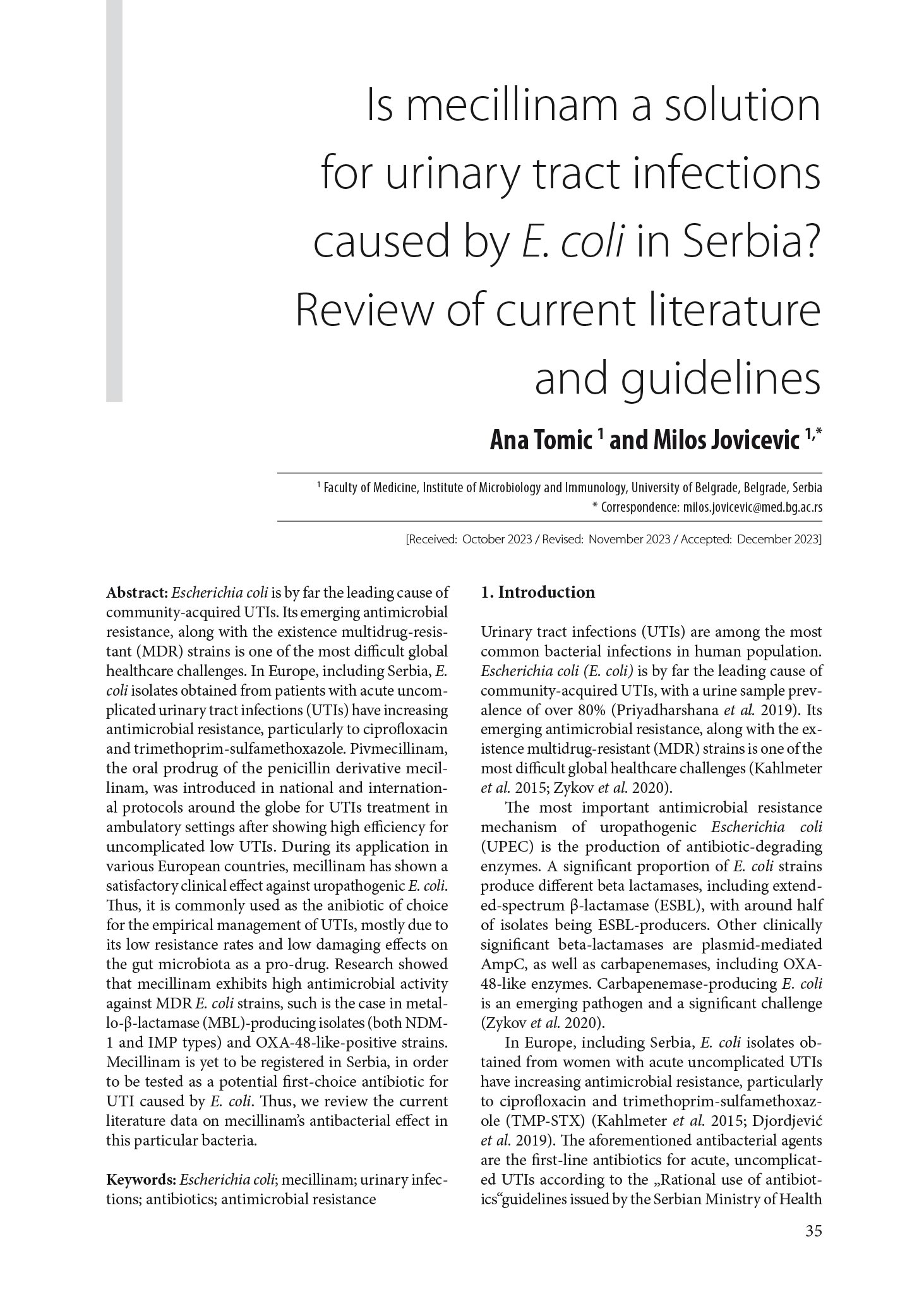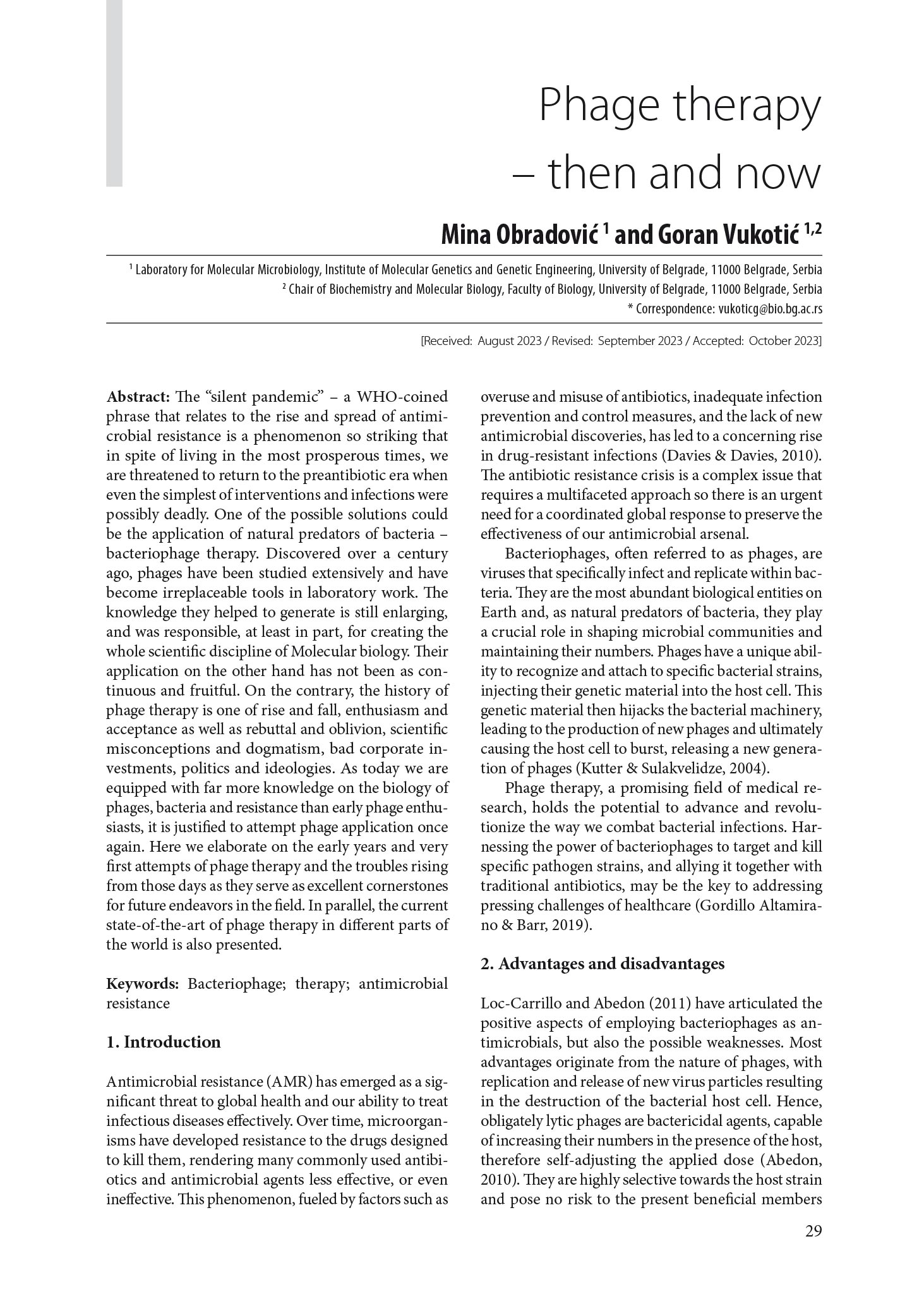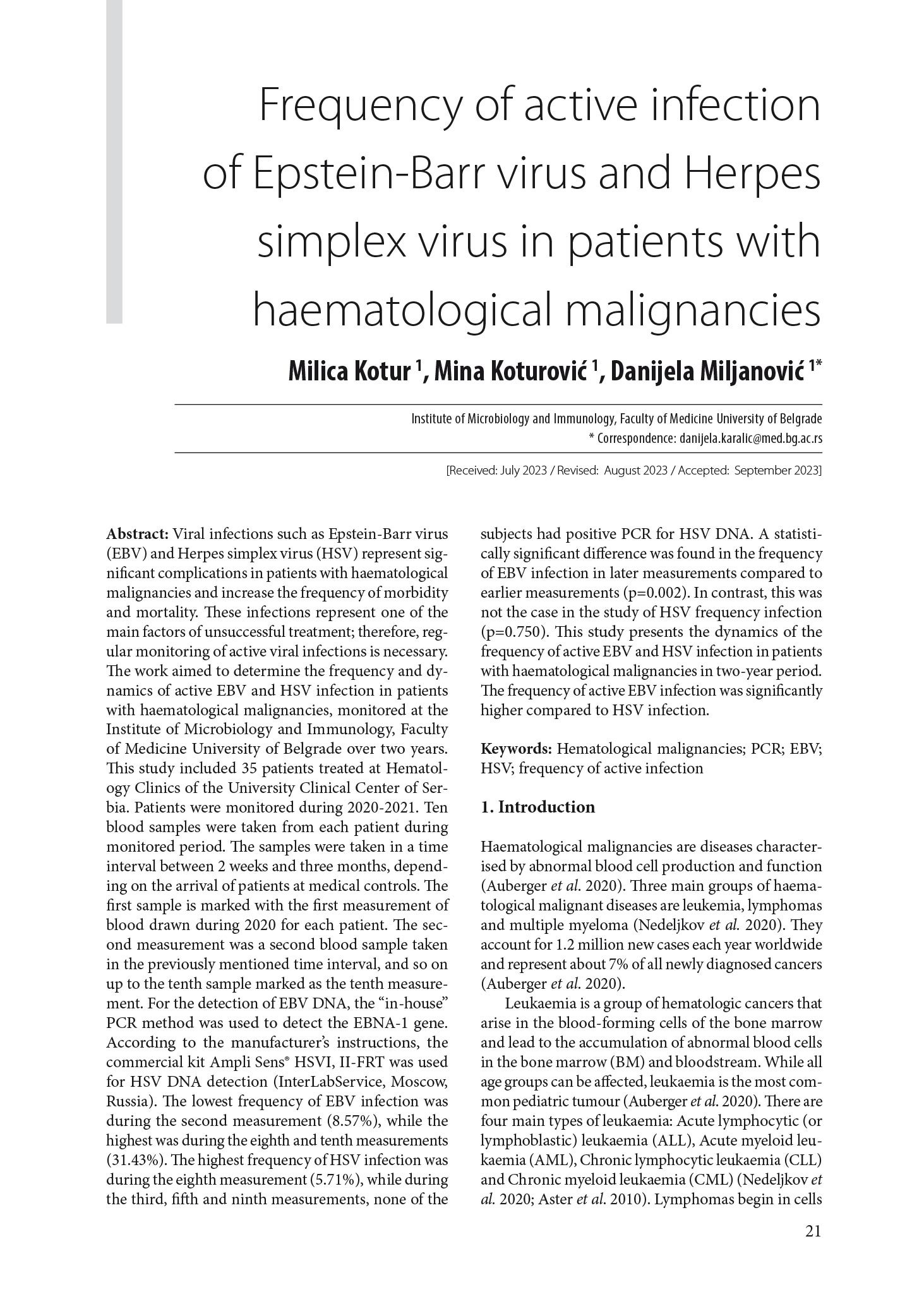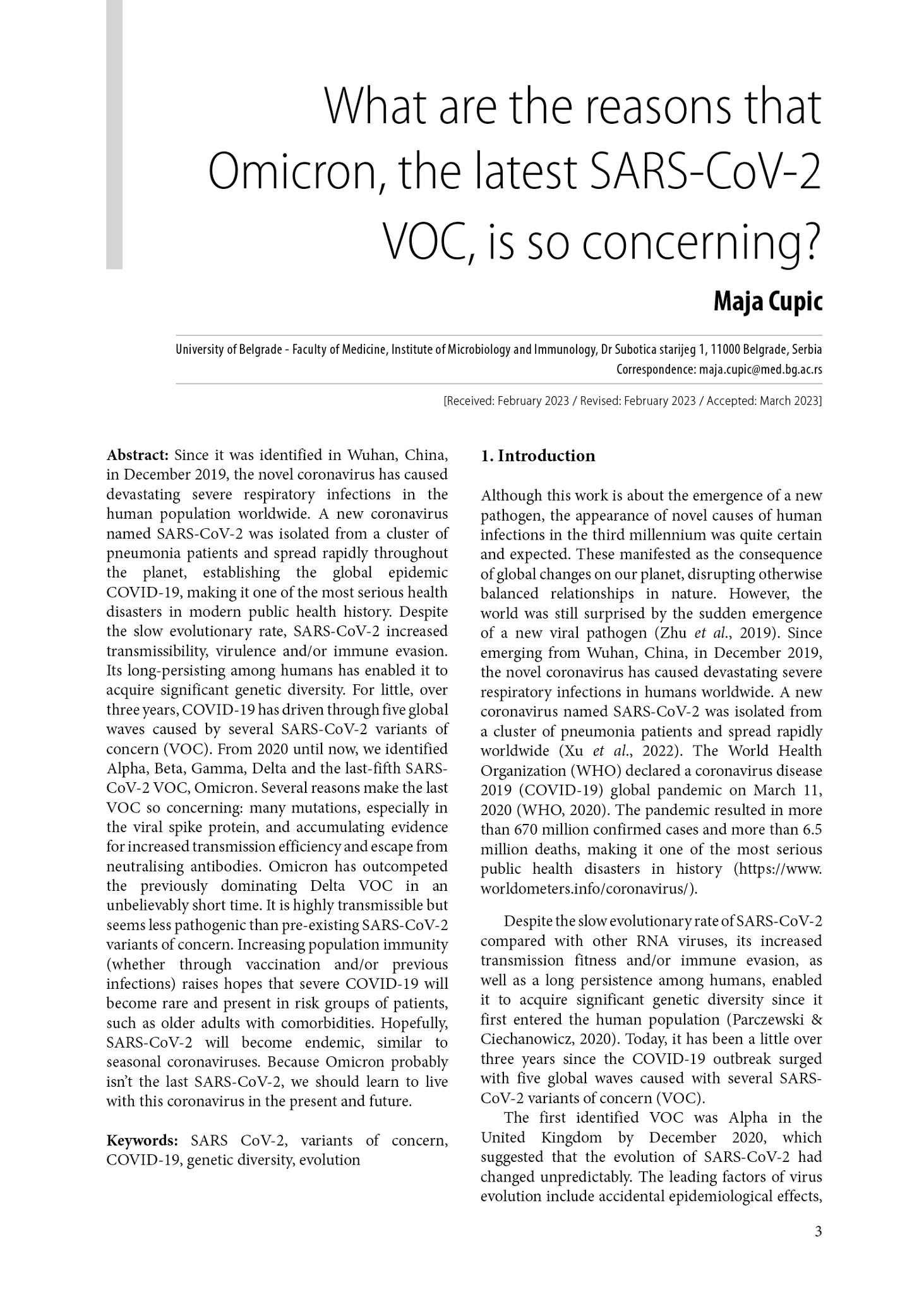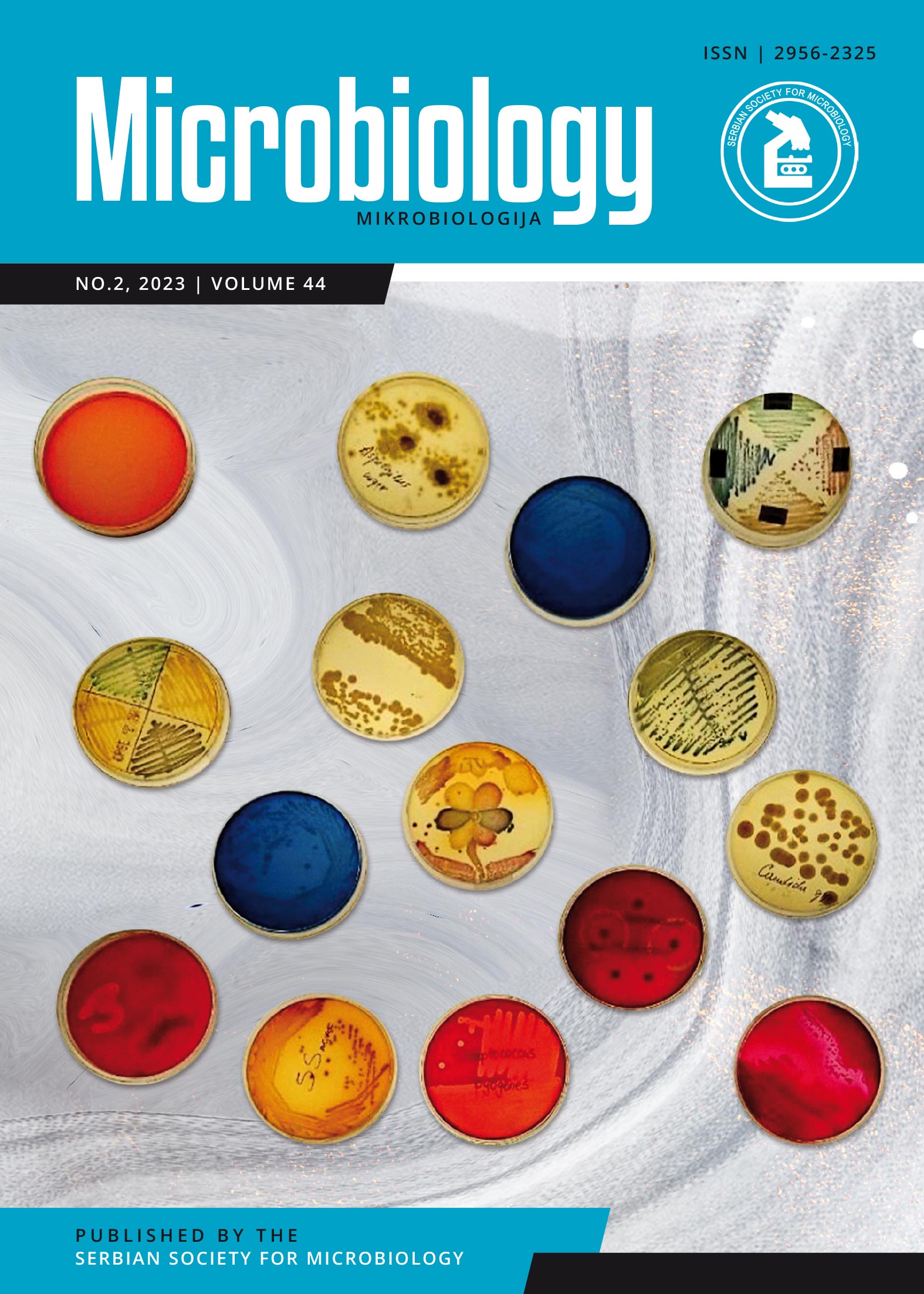Volume #44 – 2 – 4
Escherichia coli is by far the leading cause of community-acquired UTIs. Its emerging antimicrobial resistance, along with the existence multidrug-resistant (MDR) strains is one of the most difficult global healthcare challenges. In Europe, including Serbia, E. coli isolates obtained from patients with acute uncomplicated urinary tract infections (UTIs) have increasing antimicrobial resistance, particularly to ciprofloxacin and trimethoprim-sulfamethoxazole. Pivmecillinam, the oral prodrug of the penicillin derivative mecillinam, was introduced in national and international protocols around the globe for UTIs treatment in ambulatory settings after showing high efficiency for uncomplicated low UTIs. During its application in various European countries, mecillinam has shown a satisfactory clinical effect against uropathogenic E. coli. Thus, it is commonly used as the anibiotic of choice for the empirical management of UTIs, mostly due to its low resistance rates and low damaging effects on the gut microbiota as a pro-drug. Research showed that mecillinam exhibits high antimicrobial activity against MDR E. coli strains, such is the case in metallo-β-lactamase (MBL)-producing isolates (both NDM-1 and IMP types) and OXA-48-like-positive strains. Mecillinam is yet to be registered in Serbia, in order to be tested as a potential first-choice antibiotic for UTI caused by E. coli. Thus, we review the current literature data on mecillinam’s antibacterial effect in this particular bacteria.

